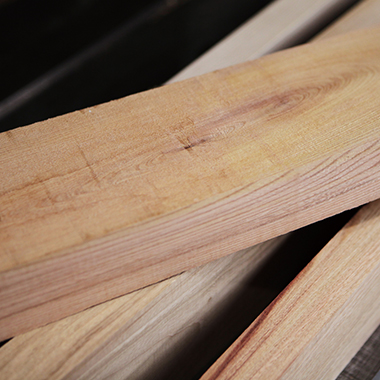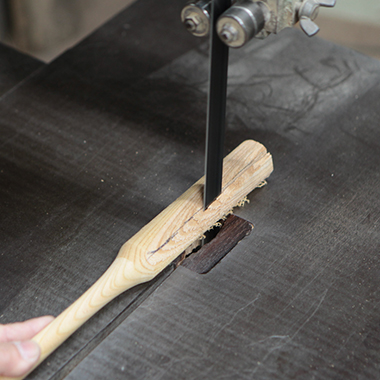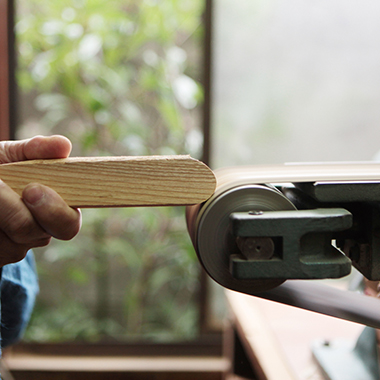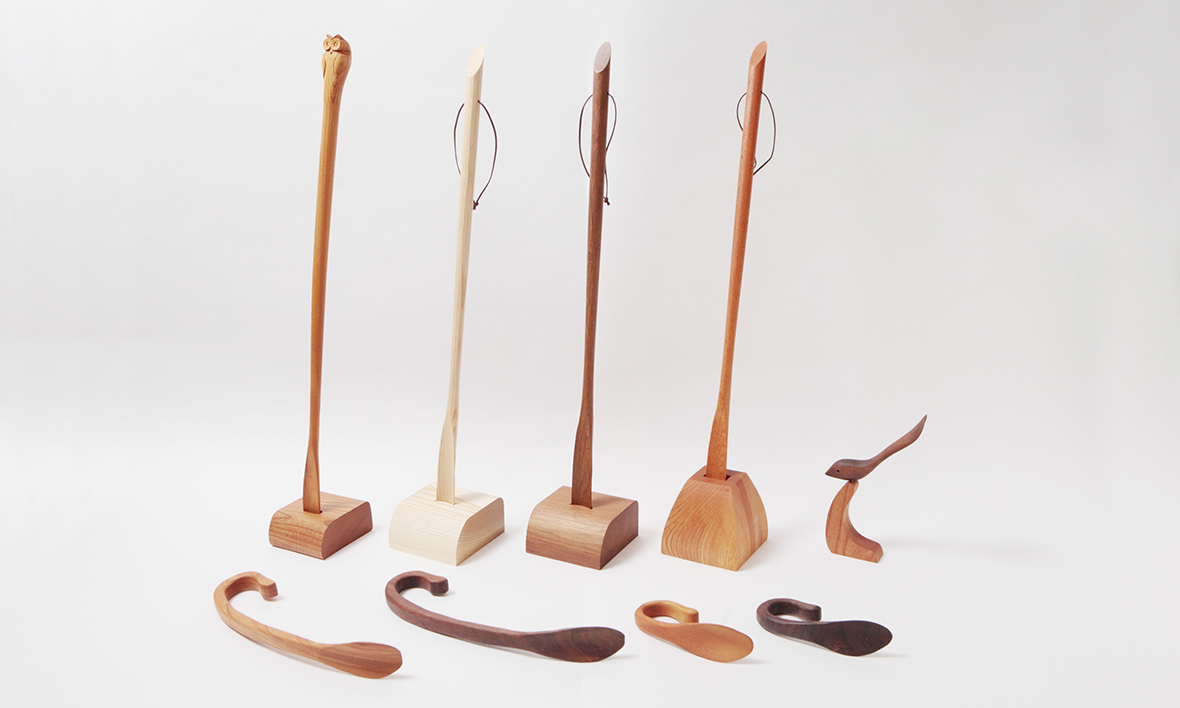 Wooden Shoe Horns
Igawa Sculpture Shop (Tokushima Prefecture)
Wooden Shoe Horns
Igawa Sculpture Shop (Tokushima Prefecture)
Easy to use wooden shoehorns made by a long-established producer of Buddhist sculptures made from non-Japanese woods.
“Tokushima has long been a region for producing Buddhist sculptures using imported from non-Japanese woods. I was named a successor to the craft from a young age, so I went to Kyoto for training as soon as I graduated high school,” says third generation head of Igawa Sculpture Shop Masahiro Igawa. Now, though the wooden Buddhist sculpture industry in Tokushima has declined, the region still makes a wide range of products using Kyoto and Karaki sculpture techniques. These include shrine sculptures, Buddhist altar sculptures, Boys’ Festival dolls, and Awa Hina dolls. Of these products, about half of all the orders each year are for wooden helmets for Boys’ festival dolls. These helmets feature delicate and vibrant carving. “Starting with the helmet, we get more and more orders from individual customers every year, and we are recently getting lots of made-to-order requests. It’s interesting and some of the unique ideas we receive are surprising,” says Igawa. Such orders resulting in producing a wide range of originally designed memorabilia and pop music concert novelties.
The wooden shoe horn was developed alongside Tokushima designers out of a desire to make something that would be cherished for a long time. Igawa says that without a designer it would have been impossible to achieve a product that was both functional and had a simple design with nothing wasted. “Indeed, I’m just a craftsman, so my field of vision is relatively narrow. The designer’s approach was something entirely new.” The long handles of the shoe horn are comfortable for the hands and allow for use even while standing, and it is complimented by a smooth-feeling oil-finish. The entire product is made of zelkova wood, and includes a wooden pedestal since the shoe horn requires more force than originally thought.
“The shoehorn uses zelkova wood from Tokushima and Kochi. It’s great that there are so many types of trees in Tokushima. It’s fascinating how the same tree will have a totally different hardness and ease of carving depending on its location,” says Igawa. The success of the product is due to Igawa’s many years of experience and knowledge of various tree characteristics. The shoehorn utilizes this exceptional knowledge.
Igawa Sculpture Shop, LLC
3-1-56 Suehiro, Tokushima-shi, Tokushima
770-0866
Tel.088-653-5315
http://www.hori-masa.co.jp

The wood is quickly grown in Shikoku, and boasts an attractive grain and excellent durability.

Each horn is carved one at a time while conceptualizing the final design.

The final process is the finish, which requires the utmost care.







































































